Chapter 6 ~ Environmental Hazards and Toxicology
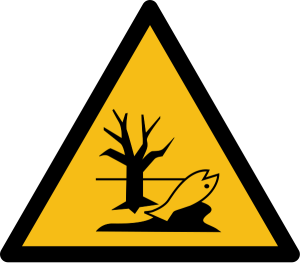
Key Terms
Environmental hazard, Biological hazard, Chemical hazard, Toxicology, Environmental toxicology, Ecotoxicology, Radiation
Learning Objectives
Upon completion of this chapter, students will be able to:
- Describe the various types of environmental hazards.
- Explain the causes of hazards and how biota respond to changes in ecosystems.
- Differentiate natural and anthropogenic hazards with examples.
- Explain the differences among various types of environmental hazards.
- Explain the most common natural and man-made hazards in the state of Louisiana.
Chapter Overview
- Introduction
- Types of Environmental Hazards
- Probability of Future Hazard Events
- Chapter Summary
Introduction
A wide range of environmental hazards we come across in almost all habitats and public and private properties include, but are not limited to, the workplace, construction areas, parks and recreational areas, industries, and living beings. All living beings experience them directly or indirectly in their habitats—local, state, regional, national, and international. Environmental hazards can also be classified into three interrelated categories (biological, chemical, and physical) based on the properties of their causes and interactive behavior. For example, indoor air pollution is both a traditional and chemical hazard; a flood and global warming are primarily physical hazards, but they can lead to the spread of waterborne diseases (a biological hazard) and increased levels of greenhouse gases such as carbon dioxide, methane, etc. (chemical hazards); and infectious diseases (biological hazards) can also weaken the immune system, making an individual more vulnerable to chemical hazards. The diverse kinds of interactive environmental stressors and their hazards are narrated below.
Toxicology deals with a variety of chemical hazards that operate over longer periods of time (rather than as events), and they include climatic factors and many kinds of chemical and thermal pollution. Depending on the intensity of exposure, organisms may suffer acute toxicity, resulting in tissue damage or even death, or a less-obvious chronic damage that results in decreased productivity (source: B. Freedman). For instance, excessive levels of sulfur dioxide emitted from the industries into the atmosphere will reduce the productivity of vegetation and its quality or even loss of vegetation.
Types of Environmental Hazards
Biological hazards
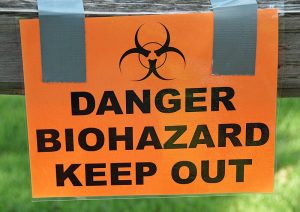
Biological hazards are caused by a variety of organisms belonging to the six kingdoms of living organisms (Archaebacteria, Eubacteria, Protista, Fungi, Plantae, and Animalia), from microbes to large animals. The effect of biological hazards, such as physiological changes, responses to stimuli, reproductive behavior, and diseases, are toxic and could cause short (acute) and or long-term (chronic) damage to life forms. These biological agents will affect their environmental abiotic factors, such as soil, air, and water quality and hygiene depending on the causative agent, dose, length of interaction or exposure, and geographic location.
Biological hazards play a critical role in interactions among organisms through competition, biodiversity, food habits, and disease. Most commonly, bacteria (Escherichia coli), viruses (COVID-19, Ebola, Influenza, etc.), fungi (molds, yeast, mildew, smuts, rusts, etc.), spores (bacterial and fungal), pollen (plants), pathogens (disease-causing agents), and parasites (flatworm, roundworm, tapeworm, heartworm, etc.) are widely distributed all over planet Earth geographically and cause short- and long-term harms to a variety of organisms, including humans. Biological pollution occurs when people release organisms beyond their natural habitats. This might involve the introduction of non-native and new species that invade and alter natural habitats, or it may be the release of pathogens into the environment through discharges of raw sewage by natural disasters such as hurricanes and flooding.

What Are Invasive Species?
Learn more about the differences between native species, non-native species, invasive species, and pests: What Are Invasive Species?
Chemical Hazards
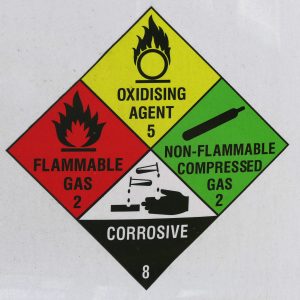
Chemical hazards are mainly two kinds—inorganic such as toxic metals (Lead, Pb; Copper, Cu; Iron, Fe; Mercury, Hg; Aluminum, Al; Cadmium, Cd, etc.); gases such as carbon dioxide, sulfur dioxide, and carbon monoxide; fibers such as asbestos; and organic chemicals such as methane (CH4), methyl mercury (CH3Hg), polychlorinated biphenyls, benzene, poly aromatic hydrocarbons, etc. The chemical hazards are toxic, which affect the living organisms and their habitats, including the water, air, and soil quality. Chemical hazards will have short- and long-term consequences on living beings. Radiation emitted by radioactive chemicals such as Cesium, Uranium, Plutonium, etc., will have devastating long-term and generational consequences in life forms due to their mutagenic (mutation causing) and carcinogenic (cancer causing) properties.
The details of various hazards and toxicology with their specific color codes and symbols are presented below. The Occupational Safety & Health Administration (OSHA), the U.S. Environmental Protection Agency (EPA), and the National Fire Protection Association have established a range of color-coded hazards to identify their nature indicated by specific symbols. A couple of samples are listed in Table 6.1.
|
Table 6.1. Hazardous Materials |
||
|
Hazard Class |
Color |
Symbol |
|
Explosives |
Orange |
Starburst |
|
Non-flammable Gases |
Green |
Cylinder |
|
Flammable Gases or Liquids |
Red |
Flame |
|
Flammable Solids |
Red/White Stripes |
Flame |
|
Oxidizers |
Yellow |
Flaming Ball |
|
Poisons |
White |
Skull & Crossbones |
|
Radioactives |
Yellow/White |
Propeller |
|
Corrosives |
White/Black |
Test Tube |
Source: The Occupational Safety & Health Administration (OSHA) Hazard Communication Standard
The Hazard Communication Standard (HCS) requires pictograms on labels to alert users of the chemical hazards to which they may be exposed. Each pictogram consists of a symbol on a white background framed within a red border and represents a distinct hazard(s). The pictogram on the label is determined by the chemical hazard classification. (Hazard Communication Standard Pictogram (osha.gov))
Heavy Metals
Heavy metals are chemical elements. Examples include lead, arsenic, mercury, iron, and cadmium.
Lead
Lead (Pb) is a metal that occurs naturally in the rocks and soil of the Earth’s crust. It is also released from mining, manufacturing, and the combustion (burning) of fossil fuels such as coal, oil, gasoline, and natural gas. Lead is used to produce batteries, pipes, roofing, scientific electronic equipment, military tracking systems, medical devices, and products to shield X-rays and nuclear radiation. It is used in ceramic glazes and crystal glassware. Because of health concerns, lead and lead compounds were banned from house paint in 1978; from solder used on water pipes in 1986, from gasoline in 1995, from solder used on food cans in 1996, and from tin-coated foil on wine bottles in 1996. The U.S. Food and Drug Administration has set a limit on the amount of lead that can be used in ceramics.
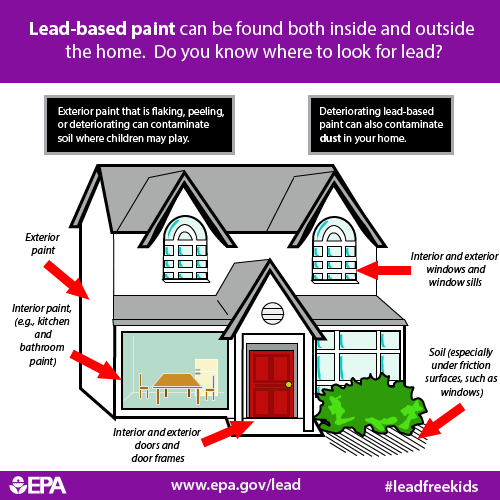
Examples
The video below explains how Flint, Michigan’s water supply was polluted with lead in 2014 and the problematic government response that followed.
This video was made in 2016. As of 2020, Flint has a clean water source, and the city of Flint is in the process of compensating affected residents for the damages. Read a 2020 update.
Arsenic
Arsenic (As) is a naturally occurring element that is normally present throughout our environment in water, soil, dust, air, and food. Levels of arsenic can regionally vary due to farming and industrial activity as well as natural geological processes. The arsenic from farming and smelting tends to bind strongly to soil and is expected to remain near the surface of the land for hundreds of years as a long-term source of exposure. Wood that has been treated with chromated copper arsenate (CCA) is commonly found in decks and railings in existing homes and outdoor structures such as playground equipment. Some underground aquifers are located in rock or soil that has naturally high arsenic content.

Most arsenic gets into the body through the ingestion of food or water. Arsenic in drinking water is a problem in many countries around the world, including Bangladesh, Chile, China, Vietnam, Taiwan, India, and the United States. Arsenic may also be found in foods, including rice and some fish, where it is present due to uptake from soil and water. It can also enter the body by breathing dust containing arsenic.
Arsenic poisoning causes a variety of symptoms and serious health conditions (Figure 6.2). Researchers are finding that arsenic, even at low levels, can interfere with the body’s endocrine system. Arsenic is also a known human carcinogen associated with skin, lung, bladder, kidney, and liver cancer.
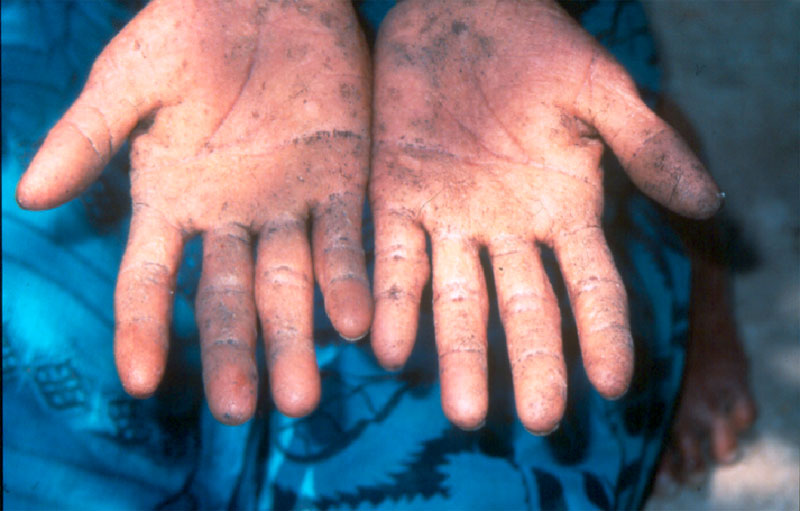
Mercury
Mercury (Hg) is a naturally occurring metal, a useful chemical in some products, and a potential health risk. Mercury exists in several forms; the types of mercury people are usually exposed to are methylmercury and elemental mercury. Elemental mercury at room temperature is a shiny, silver-white liquid, which can produce a harmful odorless vapor. Methylmercury, an organic compound, can build up in the bodies of long-living, predatory fish (Biomagnification). Although fish and shellfish have many nutritional benefits, consuming large quantities of fish increases a person’s exposure to mercury. Pregnant women who eat fish high in mercury on a regular basis run the risk of permanently damaging their developing fetuses. Children born to these mothers may exhibit motor difficulties, sensory problems, and cognitive deficits. The United States Environmental Protection Agency thus recommends that pregnant women and young children should not consume any swordfish, shark, king mackerel, or tilefish because of their high mercury content. These individuals are advised to eat fish low in mercury such as salmon, shrimp, pollock, and catfish (Figure 6.3). To keep mercury out of the fish we eat and the air we breathe, it’s important to take mercury-containing products to a hazardous waste facility for disposal. Common products sold today that contain small amounts of mercury include fluorescent lights and button-cell batteries (Figure 6.3; 15.4: Environmental Toxicology Biology LibreTexts).

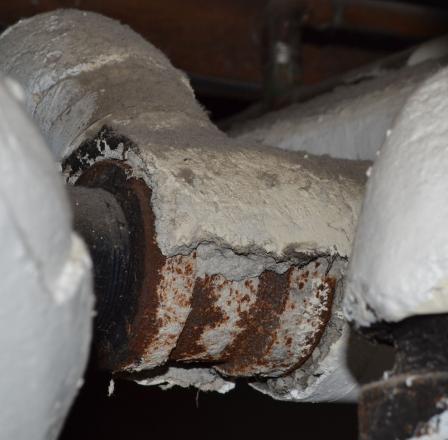
DDT (dichloro-diphenyl-trichloroethane), a synthetic insecticide, was developed and used to combat malaria, typhus, and other insect-borne human diseases. DDT’s quick success as a pesticide and broad use in the United States and other countries led to the development of resistance and bioaccumulation by many insect pest species and higher animals in food chains and food webs (source: DDT – A Brief History and Status | US EPA).

Figure 6.5. DDT pesticide residue in fish and other prey poisoned bald eagles, causing eggshell thinning that resulted in widespread nesting failures.Image by Ron Holmes/USFWS (public domain).
Radon is a natural inert gas that emits radioactive particles from the soil into the atmosphere and causes lung cancer over a period of long exposures (Figure 6.6). This is the second leading cause of lung cancer in the United States of America (Radon and Your Health | NCEH | CDC).

Other Hazards
Physical hazards range from a wet floor in buildings, foul odor in the air, depth in water bodies, explosions, and trampling by heavy machinery or hikers, and extreme temperatures cause thermal pollution. Warzones and ball games in indoor stadiums such as the Superdome in New Orleans, Louisiana, cause noise pollution. Excessive rainfall and flooding causes loss of property and life, especially in low-lying areas and flood-prone zones. Forest fires cause loss of life, biomass of ecosystems, release of toxic gases, etc.
Thermal hazard: Heat pollution is caused by the release of heat (thermal energy) into the environment, which results in ecological stress. The tolerance levels for heat are different for different organisms based on their geographic locations, such as temperate and tropical environments. It is also associated with discharges of hot water from power plants and industries into surrounding ponds and habitats.
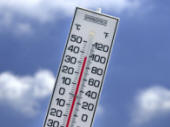 What is extreme heat? Temperatures that hover 10 degrees or more above the average high temperature for the region and last for several weeks are defined as extreme heat. Humid or muggy conditions, which add to the discomfort of high temperatures, occur when a “dome” of high atmospheric pressure traps hazy, damp air near the ground. Excessively dry and hot conditions can provoke dust storms and low visibility. Droughts occur when a long period passes without substantial rainfall. A heat wave combined with a drought is a very dangerous situation. Extreme Heat Information Sheet (source: HEAT (la.gov))
What is extreme heat? Temperatures that hover 10 degrees or more above the average high temperature for the region and last for several weeks are defined as extreme heat. Humid or muggy conditions, which add to the discomfort of high temperatures, occur when a “dome” of high atmospheric pressure traps hazy, damp air near the ground. Excessively dry and hot conditions can provoke dust storms and low visibility. Droughts occur when a long period passes without substantial rainfall. A heat wave combined with a drought is a very dangerous situation. Extreme Heat Information Sheet (source: HEAT (la.gov))
Heavy rain and road hazards: Heavy snow, rains, mudslides, and flash flooding are the reasons for road hazards. This is one of the common types of physical hazards globally.
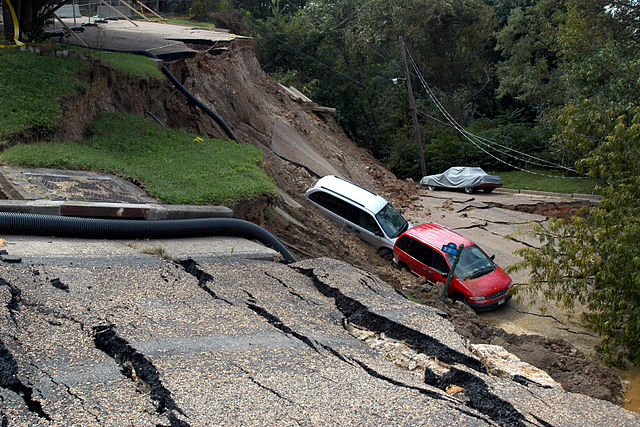
Radiation hazard: Radiation stress is caused by excessive exposure to ionizing energy. The radiation may be emitted by nuclear waste or explosions, or it can be diagnostic X-rays or solar ultraviolet energy.
Natural disasters such as hurricanes, tornadoes, earthquakes, volcano eruptions, etc., individually or collectively, cause hazardous conditions and result in loss of life and biodiversity, disrupt the harmony in ecosystems, reduce the productivity of food chains and food webs, and damage the environmental quality.
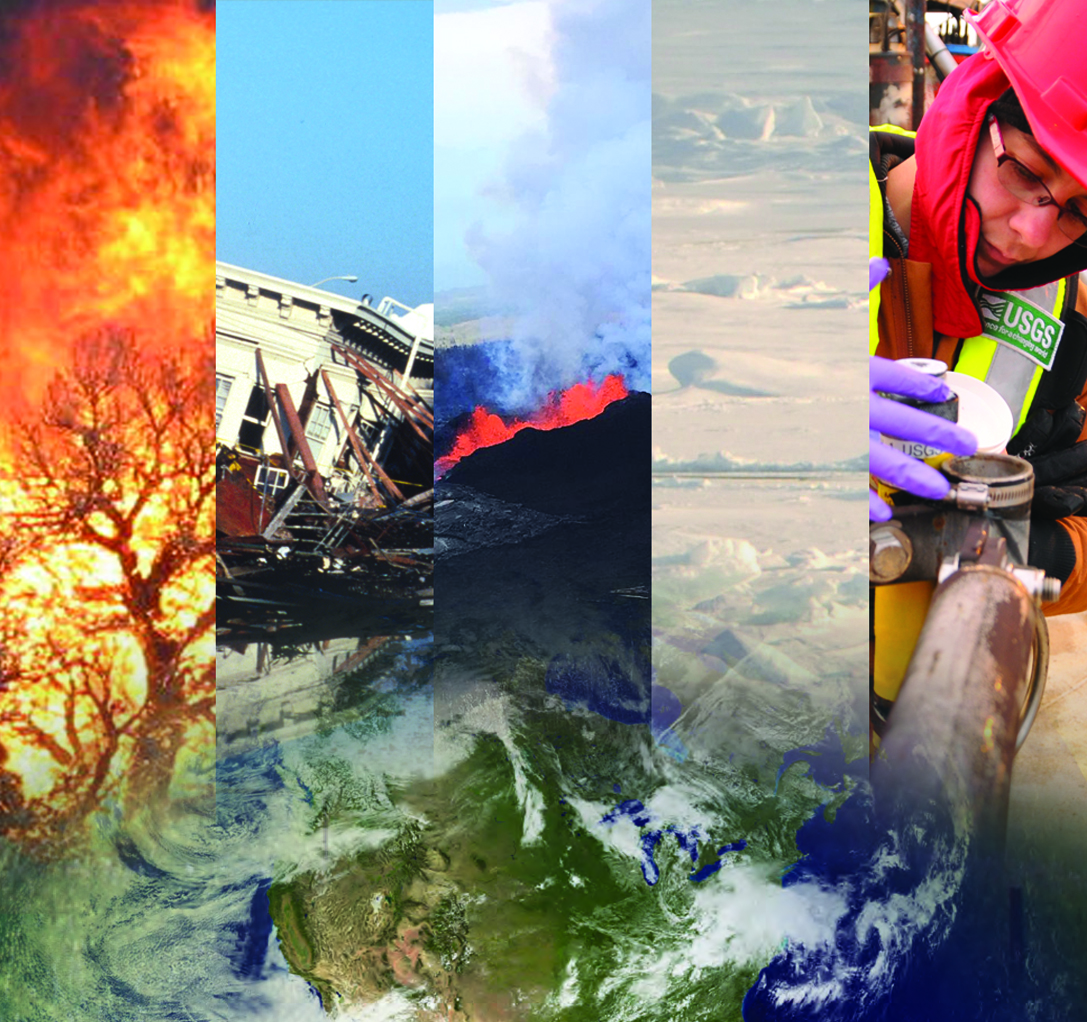
Figure 6.8. This figure shows a variety of natural hazards ranging from forest fires to earthquakes. Source: Collage of images showing Natural Hazard activities | U.S. Geological Survey (usgs.gov)
Cyclones: A tropical cyclone is a rotating, organized system of clouds and thunderstorms that originates over tropical or subtropical waters and has a closed low-level circulation. Tropical cyclones rotate counterclockwise in the Northern Hemisphere. The Atlantic hurricane season runs from June 1st to November 30th; however, these storms can develop before or after the season.
Low-pressure systems, warm temperatures over the oceans, water and atmospheric pressure, moist environment (precipitation), and tropical wind patterns over the equator are the required conditions for the development of tropical cyclones.
Hurricane hazards: Storm surge (increase the mean water level 15 feet or more), inland flooding, high winds, and tornadoes are the most common hazards caused by hurricanes. These hazards are highly destructive to human and wildlife habitats and life, buildings, businesses, transportation, agriculture, etc.
Graphical Hurricane Local Statement: Issued by local National Weather Service offices to provide more specific information about potential impacts of a tropical storm or hurricane in a particular area (source: National Weather Service).
Wind hazards: High winds are deadly hazards, especially when they are combined with rain and fire. The Saffir-Simpson Hurricane Wind Scale is a 1 to 5 rating based on a hurricane’s maximum sustained wind speed. Table 6.3 below summarizes the level of hurricane and wind speed. Hurricanes level 3 or above are considered major hurricanes due to the level of destruction and loss of life caused by the high-speed winds and rain (source: Saffir-Simpson Hurricane Wind Scale [noaa.gov]).
Table 6.3. This table shows the hurricane categories, wind speed, and the damage caused by hurricanes.
|
Category |
Sustained winds (mph) |
Types of damage |
|
1 |
74–95 |
Very dangerous winds will produce some damage: Well-constructed frame homes could have damage to roofs, shingles, vinyl siding, and gutters. Large branches of trees will snap, and shallowly rooted trees may be toppled. Extensive damage to power lines and poles likely will result in power outages that could last a few to several days. |
|
2 |
96–110 |
Extremely dangerous winds will cause extensive damage: Well-constructed frame homes could sustain major roof and siding damage. Many shallowly rooted trees will be snapped or uprooted and block numerous roads. Near-total power loss is expected with outages that could last from several days to weeks. |
|
3 |
111–129 |
Devastating damage will occur: Well-built framed homes may incur major damage or the removal of roof decking and gable ends. Many trees will be snapped or uprooted, blocking numerous roads. Electricity and water will be unavailable for several days to weeks after the storm passes. |
|
4 |
130–156 |
Catastrophic damage will occur: Well-built framed homes can sustain severe damage with the loss of most of the roof structure and/or some exterior walls. Most trees will be snapped or uprooted and power poles downed. Fallen trees and power poles will isolate residential areas. Power outages will last weeks to possibly months. Most of the area will be uninhabitable for weeks or months. |
|
5 |
157–> |
Catastrophic damage will occur: A high percentage of framed homes will be destroyed, with total roof failure and wall collapse. Fallen trees and power poles will isolate residential areas. Power outages will last for weeks to possibly months. Most of the area will be uninhabitable for weeks or months. |
Anthropogenic (man-made) hazards: Intentional and accidental combustion of the biomass of an ecosystem causes forest fires. A wildfire can be ignited by people. A severe fire consumes much of the biomass of an ecosystem, but even a less-severe fire may kill many organisms by scorching and poisoning by toxic gases (source: B. Freedman).
Toxicology is the science of the study of poisons. It examines their chemical nature and effects on the physiology of organisms. If the dose (exposure) is large enough, any chemical, even water, can cause toxicity. In the biological sense, a chemical can poison an organism if it detrimentally affects some aspect of its metabolism. This effect is called toxicity.

Source: What is Toxicology? (hazwoper-osha.com)
Environmental toxicology is a broader field than conventional toxicology. In addition to studying the biology of poisoning, it also examines environmental factors that influence the exposure of organisms to potentially toxic chemicals.

Source: environmental toxicology pictures – Google Search
Ecotoxicology has an even broader domain because it studies the direct poisonous influences of chemicals as well as indirect ones. Examples of indirect ecological influences include changes in habitat or in the abundance of food. For instance, the use of a herbicide in forestry or agriculture will affect the biomass and species composition of the vegetation on a treated area. These are important changes in the habitats of animals. Even if the herbicide does not poison animals that are exposed to the spray, they may be affected by changes in their habitat.

Source: ecotoxicology pictures – Google Search
Anthropogenic toxins and their distribution in the environment and among the biota are due to human activities, which eventually damage the natural resources and human health.
Most commonly, anthropogenic (man-made) toxins are associated with (a) accidental or deliberate emissions of chemicals into the environment, such as lead, copper, cadmium, zinc, nickel, sulfur dioxide, nitrates, phosphates, pesticides, biological waste, and hydrocarbons, to name a few; (b) releases of substances such as chlorofluorocarbons (commonly used in refrigerators, air conditioners, etc.) that react in the environment to synthesize chemicals of greater toxicity; (c) releases of excessive heat from factories and industrial sites into the nearby water bodies that increase the water temperatures; and (d) discharges of chemicals such as nitrogen, phosphorus, potassium, etc., from fertilizers (source: B. Freedman).
Biological hazards: Mosquito-borne diseases such as Malaria, Encephalitis, Dengue Fever, and Yellow Fever were reported in the United States and the state of Louisiana.
Louisiana Perspective on Environmental Hazards
LA.Gov suggests the following protective measures to protect yourself, livestock, and pets:
- Remove all sources of stagnant water in which mosquitoes might breed.
- Water buckets, water troughs, wading pools, bird baths, wheelbarrows, clogged roof gutters, discarded tires, plastic containers or any water-holding container should be cleaned or emptied on a weekly basis.
- Stay indoors at dawn, dusk, and in the early evening to avoid mosquito bites.
- Wear long-sleeved shirts and long pants whenever you are outdoors.
- Spray clothing with repellents containing permethrin or DEET, since mosquitoes may bite through thin clothing.
- Apply insect repellent sparingly to exposed skin.
- Use mosquito-resistant structures such as well-maintained insect screening and fans to reduce potential access of mosquitoes to horses and other livestock hosts.
- Your pets should be kept inside during peak mosquito feeding times, which are dawn and dusk.
Contact medical professionals immediately should any signs or symptoms of any mosquito-borne diseases be noticed (source: BIOLOGICAL [la.gov]).
Probability of Future Hazard Events
The estimated probability of a hazard event occurring in the City of New Orleans is summarized below in Table 6.2. [1 – Summary – NOLA Ready]. The probability of future hazard reoccurrence, found in Table 6.2, was calculated using the National Oceanic and Atmospheric Administration NCDC/NCEI Database. There are limitations to this data. However, this is the best available data at the present moment, and it was used to calculate the probabilities below. ([1] U.S. Global Change Research Program. [2018]. Fourth National Climate Assessment, Volume II [Chapter 19: Southeast]. U.S. Government Publishing Office. https://doi.org/10.7930/NCA4.2018.CH19).
Table 6.2. Probability of Future Hazard Reoccurrence
|
Hazard |
Annual Probability (%) |
|
Flooding |
100 |
|
Tropical Cyclones |
92 |
|
Coastal Erosion |
100 |
|
Tornadoes |
36 |
|
Subsidence |
100 |
|
Winter Weather |
36 |
|
Extreme Heat |
100 |
|
Severe Thunderstorm |
100 |
Source: NCEI; Summary – NOLA Ready
Drought hazard:

Drought is a soil condition caused by the combination of physical and natural stressors and becomes a hazard (see figure). It occurs in all geographic locations irrespective of the average annual rainfall due to excessive temperatures and heat, lack of water conservation strategies, and very low levels of rainfall. Per la.gov, although Louisiana features several large bodies of water, thousands of miles of rivers, streams, and bayous, and is home to thousands of acres of wetlands, the state has experienced occasional drought conditions.
Here are some viable strategies for drought mitigation suggested by la.gov to focus mainly on water conservation:
Repair dripping faucets by replacing washers. Fact to be known: One drop per second wastes 2,700 gallons of water per year.
Check and fix all the leaks in all residential, recreational, tour, and work facilities in a timely manner.
Insulate your water pipes to reduce heat loss and prevent them from breaking.
Choose appliances that are more energy and water efficient.
Invest in a low-volume toilet that uses less than half the water of older models.
Reduce the amount of water used in showers and in sinks while brushing.
Limit the amount of water usage to optimal levels during car washes and watering lawns.
Note: In many areas, low-volume units are required by law (source: LOUISIANA HAZARDS + THREATS [la.gov]).
Chapter Summary
Environmental hazards and toxicology are closely intertwined in global habitats and interact with biotic and abiotic factors. The biological, chemical, and physical hazards can be natural or anthropogenic and may operate over the short term (acute) or long term (chronic). Environmental hazards may cause physical disruptions of roads and bridges, forests, wetlands, biodiversity, disease, and loss of crops, to name a few. Environmental hazards and toxicological aspects must be dealt with utmost safety regulations and policies for the benefit of environmental and public health as summarized in cartoons below.
(Source: Bone Cartoon: Work Safety Cartoon – Bing images; Think Safe: Work Safety Cartoon – Bing images)
Review Questions
- Which toxic metals are considered as major environmental hazards?
- What are the sources of biological and chemical hazards in Louisiana?
- What are the best and good choices of food sources to avoid mercury in diet?
- Compare and contrast physical, thermal, and natural hazards.
- Explain how environmental toxicology affects fisheries and human health.
- What are viable strategies for drought mitigation in Louisiana to focus mainly on water conservation?
Critical Thinking /Questions for Discussion
- Why is environmental hazard awareness significant to humans?
- Explain with examples how biological hazards interact with chemical hazards.
- How do natural disasters play a role in terms of chemical, biological, and physical hazards?
- Explain the relationship between the air quality and chemicals in the atmosphere.
- Explain with examples the difference between toxicology and environmental toxicology.
- Explain how the environmental hazards contributing to human health. Provide supporting evidence.
Key Terms
- Environmental hazard – like pollution, this is caused by chemical, physical, or biological agents in water, soil, and air causing acute or chronic diseases or harm to human health or even death of living beings including humans.
- Biological hazard – like bacteria, fungi, and other biological organisms or substances that come from living beings, this causes acute or chronic diseases or harm to human health or even death of living beings, including humans.
- Chemical hazard – like inorganic or organic chemical substances come from water, soil, and air, this causes acute or chronic diseases or physical and mental harm to humans or even death of living beings, including humans.
- Toxicology – the science of the study of poisons, including their chemical nature and their effects on the physiology of organisms. Compare with environmental toxicology and ecotoxicology.
- Environmental toxicology – the study of environmental factors influencing exposures of organisms to potentially toxic levels of chemicals. Compare with toxicology and ecotoxicology.
- Ecotoxicology – study of the directly poisonous effects of chemicals in ecosystems, plus indirect effects such as changes in habitat or food abundance caused by toxic exposures. Compare with toxicology and environmental toxicology.
- Radiation – is energy in the form of light that comes from the sun and travels through space, also called “electromagnetic waves.”
Links to Discovery
Resource links, image/infographic links
Biological hazard: Heartworm Basics – American Heartworm Society
Attributions
Environmental Science – Simple Book Publishing (pressbooks.pub)
Bill Freedman, Environmental Science-Canadian Perspective
Water Contamination from An Introduction to Geology by Johnson et al. (licensed under CC-BY-NC-SA)
Water Pollution from Environmental Biology by Matthew R. Fisher (licensed under CC-BY)
Water Pollutants and Their Sources is shared under a CC BY-NC-SA 4.0 license and was authored, remixed, and/or curated by Melissa Ha and Rachel Schleiger (ASCCC Open Educational Resources Initiative)
Pollution is shared under a not declared license and was authored, remixed, and/or curated by Melissa Ha and Rachel Schleiger (ASCCC Open Educational Resources Initiative)
15.1: Types of Environmental Hazards – Biology LibreTexts
Biological Hazard Examples and Safety Levels | SafetyCulture
LOUISIANA HAZARDS + THREATS (la.gov)
Recommended Reading
The Industrialization of Nature: A Modern History (1500 to the present) from Sustainability: A Comprehensive Foundation by Tom Theis and Jonathan Tomkin, editors. Download for free at CNX (licensed under CC-BY).
You are encouraged to watch embedded videos (YouTube videos).
Pollution caused by chemical, physical, or biological agents in water, soil, and air causes acute or chronic diseases or harm to human health or even death of living beings including humans.
Bacteria, fungi, and other biological organisms or substances that come from living beings causes acute or chronic diseases or harm to human health or even death of living beings including humans.
like inorganic or organic chemical substances come from water, soil, and air causes acute or chronic diseases or physical and mental harm to humans or even death of living beings including humans.
The science of the study of poisons, including their chemical nature and their effects on the physiology of organisms. Compare with environmental toxicology and ecotoxicology.
Energy in the form of light that comes from the Sun and travels through space also called “electromagnetic waves”.
the study of environmental factors influencing exposures of organisms to potentially toxic levels of chemicals. Compare with toxicology and ecotoxicology.
Study of the directly poisonous effects of chemicals in ecosystems, plus indirect effects such as changes in habitat or food abundance caused by toxic exposures. Compare with toxicology and environmental toxicology.




